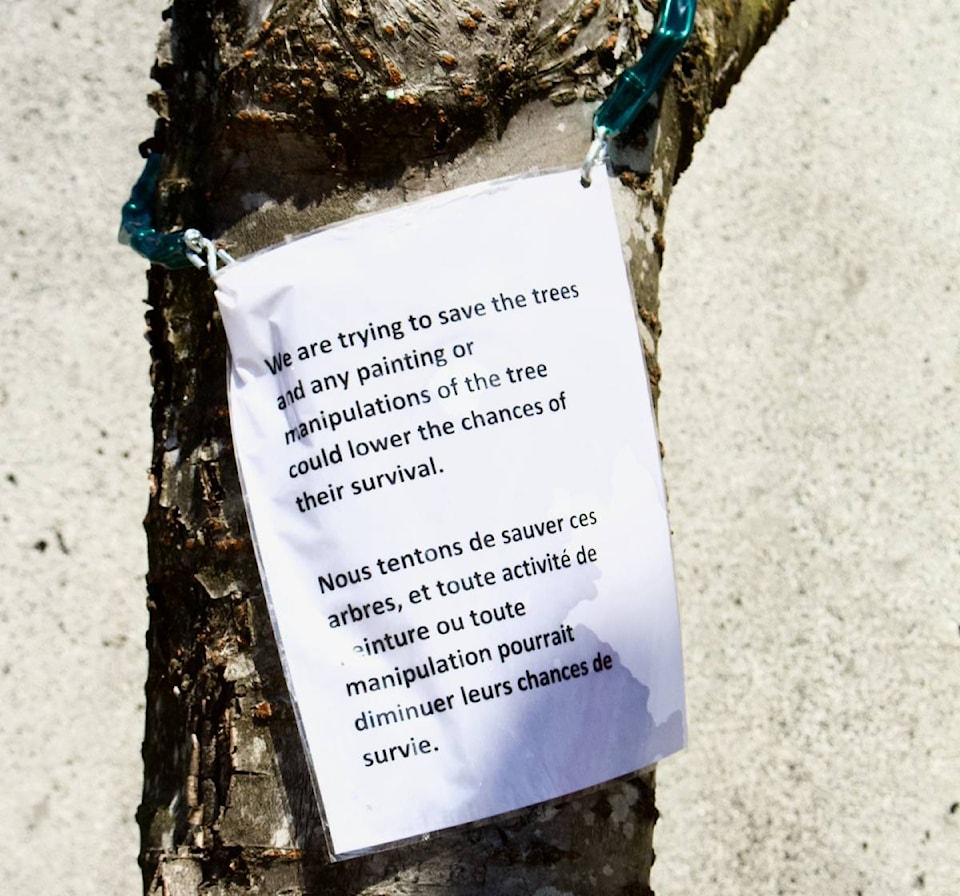Sap’s flowing in the remaining cherry trees at the corner of Fourth Street and Second Avenue West. That’s good news for the branches that were grafted onto the trees Wednesday afternoon.
The trees were at the centre of controversy last month, when contractors started removing them as part of a landscaping project commissioned by Public Services and Procurement Canada, the agency responsible for federal properties. Planted in 1959, the trees were a familiar and deeply loved landmark for Rupertites far and wide — and their removal drew ire from many in the city.
READ MORE: Prince Rupert’s cherry trees chopped
While three of the trees could not be saved, the remaining four will recuperate well, said Jace Richie, one of the contractors hired by the federal government to restore the trees. Helped by the branches grafted Wednesday, April 25, he expects that within a few years they will be crowned with blossoms.
“I’m really happy with the quantity of sap flowing right now. That’s the most important thing for them right now,” he said.
Grafting is a common practice among fruit tree growers to control the varieties of fruit produced by a single tree, or to repair injured trees. It involves inserting a twig or small branch into the tree’s main trunk, where it quickly becomes a part of the tree. Sometimes a protective coating is applied to exposed wood to prevent it from drying out.
The grafts are part of Richie’s six-year plan to help the cherry trees grow a new canopy.
“The grafts help the trees put out leaves to photosynthesize,” he said. “We also left some of the cuts exposed to let excess sap escape. Over time, the tree will naturally grow, covering and protecting those places. People just need to leave them alone now.”
But it’s not the four trees he was working on Wednesday that worry Richie — it’s the other 1,492 that were donated by Shizimu in 1942 and planted throughout the city.
READ MORE: History behind the cherry trees the feds cut down in Prince Rupert
“The city needs to find the rest and get them tagged. That way arborists will know what tree they’re working with before they even start,” he said.
Tagging trees is common practice in municipalities in B.C. and beyond. It’s a simple process whereby a small metal tag with an I.D. number is attached to the tree. Arborists can look up the number in a municipal database that will tell them the tree’s species, location, and other relevant information. Tagging the other trees donated to Prince Rupert by Shizimu would help prevent others from being inadvertently harmed.
But in the meantime, Richie is confident the four trees at Fourth Street and Second Avenue West will do fine, as long as people leave them alone and don’t touch the grafts.
“Trees do best when they’re left on their own. They can fix themselves,” Richie said.
newsroom@thenorthernview.com
Like us on Facebook and follow us on Twitter
